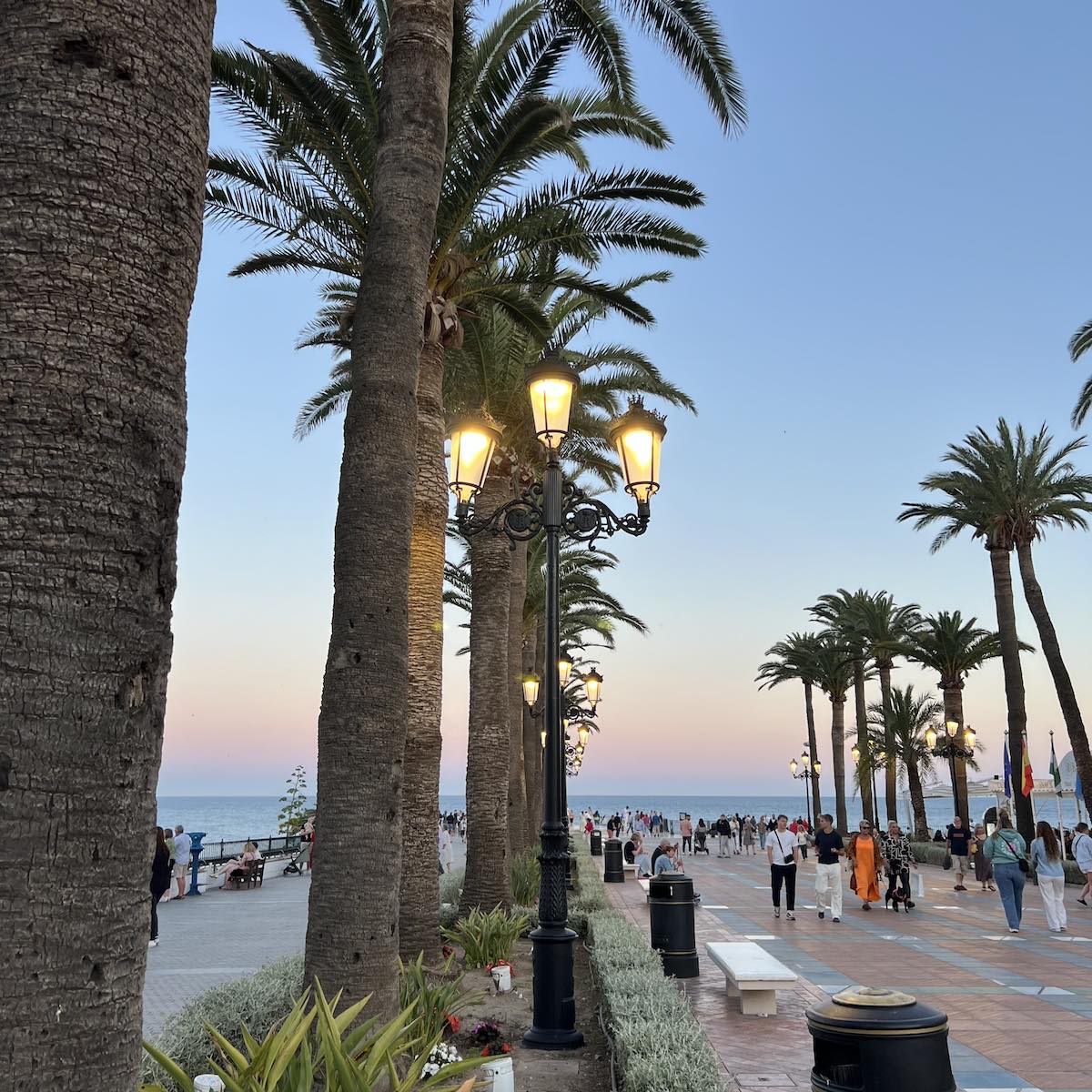Nerja, located on Spain's Costa del Sol, has a rich history spanning several thousand years. The earliest settlements in the area date back to the Paleolithic era, around 25,000 years ago, as evidenced by the fascinating cave paintings in the Cueva de Nerja. Discovered in 1959, these caves have become one of Spain's most important archaeological sites.
During Roman times, Nerja was known as "Detunda" and served as an important settlement and trading post. Remnants of this period can still be seen in the form of Roman roads and aqueducts.
When the Moors invaded Spain in the 8th century, Nerja, then known as "Narixa" (meaning abundant spring), became part of the Muslim caliphate. The Moors contributed advanced irrigation systems and architecture that still influence the area today.
Medieval to Modern Times:
Nerja was recaptured by the Christian kings in the 15th century during the Reconquista. The town remained a small fishing village and agricultural community for many centuries, known for its sugarcane plantations and fishing industry. It wasn't until the 1960s, with the advent of international tourism, that Nerja began to develop into the modern destination we see today.
The Rise of Tourism:
In the 1960s, tourism began to boom on the Costa del Sol, and Nerja quickly became a popular destination for both Spanish and international visitors. The discovery of the Cueva de Nerja significantly contributed to this popularity, as the caves attract thousands of visitors each year with their impressive stalactites and stalagmites, as well as the world's largest column. Tourism brought economic growth and enabled improvements in infrastructure and amenities.
Nerja Today:
Today, Nerja is a thriving town that successfully balances its historical heritage with modern development. The town offers a wide range of activities and attractions for visitors, including beautiful beaches, picturesque streets, and historical monuments.
-
Balcón de Europa:
- This famous viewpoint, built on the remnants of an old fortress, offers stunning views of the Mediterranean and is a central spot for both locals and tourists.
- This famous viewpoint, built on the remnants of an old fortress, offers stunning views of the Mediterranean and is a central spot for both locals and tourists.
-
Beaches:
- Nerja is known for its many beautiful beaches, such as Playa Burriana, which offers both relaxation and water activities.
- Nerja is known for its many beautiful beaches, such as Playa Burriana, which offers both relaxation and water activities.
-
Cueva de Nerja:
- One of the biggest tourist attractions, the caves offer guided tours showcasing their natural beauty and historical significance.
- One of the biggest tourist attractions, the caves offer guided tours showcasing their natural beauty and historical significance.
-
Old Town:
- The town's historic center is full of charming narrow streets, traditional white houses, and flower-covered balconies.
- The town's historic center is full of charming narrow streets, traditional white houses, and flower-covered balconies.
-
Cultural Events:
- Nerja hosts several festivals and cultural events throughout the year, including Feria de Nerja and the International Cave Festival.
Economy and Quality of Life:
Tourism remains the main economic driver in Nerja, but the town also has a vibrant agricultural sector, particularly known for its tropical fruits like avocados and mangoes. The quality of life in Nerja is considered high, with a mild climate year-round, excellent health and education services, and a strong sense of community.
Nerja has evolved from a small fishing village with ancient roots to a modern tourist destination attracting visitors from all over the world. By preserving its historical heritage while embracing modernity, Nerja offers a unique blend of culture, nature, and amenities, making it one of Spain's most beloved destinations on the Costa del Sol.


